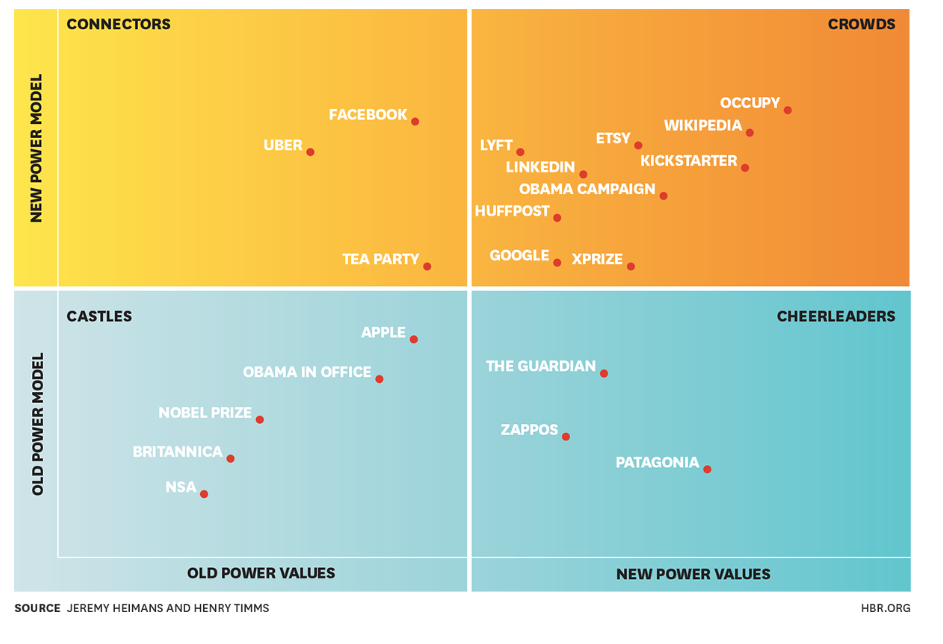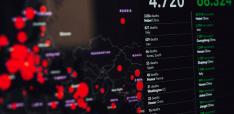New and Old Power: A New Way to Understand and Cultivate Digitally-Mediated Activism, or Just Another Framework?

This is the first of a four-part Global Policy blog series that seeks to spark new ways of thinking about digitally-mediated activism. It engages Timms and Heimans’ New/Old Power framework as a pivot upon which to interrogate power: asking how activists can use the internet to achieve and challenge new forms of power and ultimately, better make change happen.
In this digitally-dominated social epoch, the distribution and dynamics of power are changing. A window into these evolving dynamics has recently been provided by Jeremy Heimans and Henry Timms, who theorise contemporary society as operating according to two distinct forces: “New” and “Old” power. This conceptual framework has so far been applied to both the non-profit and corporate organisational contexts - yet in the activist world, where debates on the transformative potential for digital tools continue to unfold, we see little such progress.
This four-part blog series therefore seeks to apply the New/Old power framework to an activist context, asking two key questions: first, what is its value in helping us understand contemporary activism? Second, how can it help us ultimately cultivate the power to make change happen?
We start here by outlining the framework in the parallel context of debates around digitally-mediated activism. Blogs 2 and 3 subsequently apply the framework to two case studies of activism in contrasting political contexts. First, Blog 2 explores the Flint Water crisis, where activists used hashtag ethnographies to reclaim their agency in the face of Old Power’s hegemonic media narratives. Subsequently, Blog 3 explores whether digital tools enacted in Russia’s authoritarian context offer a similar challenge to institutionalised Old Power, this time in the form of political anti-abortion rhetoric. Blog 4 rounds everything up, offering conclusions on our key question throughout: what does the New/Old Power framework bring to activism? Does it enable us to better understand, and ultimately better cultivate, the power to make change happen?
Digitally-mediated activism: what we know now
Academic scholarship has been slow to reach a consensus on what the Internet and its associated digital tools (i.e., social media) mean for how activists make change happen. Indeed, on few issues are commentators so opposed as on the internet’s change-making potential. Those in favour see it as a vehicle to extend offline movements to new and diverse audiences, transcending the limitations of space and time. The revolutionary spirit which fuelled the 2011 Arab Spring, for example, was almost exclusively enabled by social networks and smartphone technology. More broadly, the unprecedented access to information that the Internet generates allows citizens internationally to demand and claim their rights and entitlements from those in power: corrupt, inefficient, or profit-driven service providers can increasingly be made more responsive and accountable by being ‘named and shamed’ online. After all, even the biggest, most opaque conglomerates are only an embarrassing leak or legal exposure away from having their credibility (and profitability) undermined.
Not everyone is so optimistic, however. First, regarding the Internet’s potential to extend offline movements, Malcolm Gladwell famously posits that the revolution will not be tweeted: the idea being that digital activism cannot produce among its participants the strong interpersonal ties that traditional forms of activism can. Rather, participating digitally involves little more than liking, sharing, and donating, frequently in self-interested ways - a critique levied this summer at performative ‘white solidarity’ during the Black Lives Matter Movement, for example. It requires little commitment of time, effort or risk - meaning that when the going gets tough and direct action is required, people won’t be sufficiently motivated to act (their attention already with the next viral problème du jour). Easy come, but easy go. Second, despite the unprecedented information access that the Internet generates, academics remain equally cynical as to its capacity to truly overcome repressive state formations. Rather, as Nigerian academic Nanjala Nyabola suggests, better technology does not necessarily mean better democracy. Rather, elites in many cases use it to their advantage: seeking to influence elections and “engineer” public consensus via a Machiavelllian combination of digitally-enabled data collection and computational modelling.
Rethinking digitally-mediated activism: introducing New/Old Power
Arguably, however, the debate over the Internet's potential for activism remains obtuse and rife with contradiction: both sides overstate and overgeneralise their arguments and most have not been updated in the last decade. Fresh theorising is sorely needed.
In this context, Timms and Heimans’ New/Old Power framework offers something new. Put simply, the framework suggests that society today operates according to two distinct forces: “old” and “new” power. Old Power works like a currency: it is closed, inaccessible, leader-driven and held by only a few. The aim is to gather as much of it as possible and hoard it, using it to ultimately control others or to spend at key moments. In contrast, New Power works like a current: it is open, participatory and made by many. The aim is not to hoard it but to channel it, encouraging and taking advantage of surges.
But what does this actually contribute to the debate around digitally-mediated activism? First, we have to understand that New Power differs from Old Power along two key axes: the models they use to gather and exercise power, and the values they adhere to. New Power models are fundamentally peer-driven and based on participation, while Old Power models are based on consumption and the unequal exchange of value. Correspondingly, New Power values emphasise collaboration, a Do It Ourselves ethic, and informal networked governance, while Old Power values rely instead on exclusivity, professionalism, and representative governance. Organisations and movements are therefore defined by Timms and Heimans according to their use of New Power models and values (think Wikipedia), Old Power models and values (think Apple), or a combination of the two (think Facebook).

As such, digital tools form a vital vehicle for New Power: enabling - rapidly and at scale - the participatory flows it so fundamentally relies on. Social media, for example, often forms the mechanism through which New Power is realised: facilitating mass participation, idea sharing, and the creation of new content, all instantaneously.
Timms and Heimans thus arguably provide a new way of understanding the change-making potential of digital tools. By placing them within the New/Old Power framework, they show that - while New Power is not emerging because of digital tools - the ability of these tools to directly facilitate New Power’s models and values renders them fundamental nonetheless. The #MeToo movement, for example, which started as just a single tweet and toppled hundreds of authoritative figures usually insulated by their power, forms a paradigmatic case of New Power models toppling Old Power values via the use of digital tools.
Looking forwards
By bringing attention to the specific imbrication of digital tools with issues of power, we therefore suggest that the New/Old Power framework offers fresh and vital thinking for activists seeking to “make change happen” in this digitally-mediated activist age. The next two blogs explore this further: asking whether the framework does indeed reveal anything new or interesting about power and change-making. Ultimately, this could have important implications for doing, designing, and planning better and more effective activism.
Next week’s blog explores the first case study: the Flint water crisis, where activists used digital tools to reclaim their own truth and successfully challenge Old Power.
Having finished her academic pursuits for now (Geography BA from Cambridge; Development Studies MSc with Distinction from the LSE), Nina is now working as a junior public sector consultant at PricewaterhouseCoopers. So far, she has worked on issues of local government reform but hopes to expand this to gain experience working with central government and international actors in the coming months. To get in touch, contact her via LinkedIn or follow on Twitter (@NewhouseNina).
Charlie Batchelor is a Freelance Research and Policy Consultant. He received his Masters in International Development and Humanitarian Emergencies with Distinction from the London School of Economics and Political Science (LSE). For business enquiries: cjd.batchelor@gmail.com. He can also be followed on Twitter: @charliejbatch
Photo by Daria Shevtsova from Pexels


